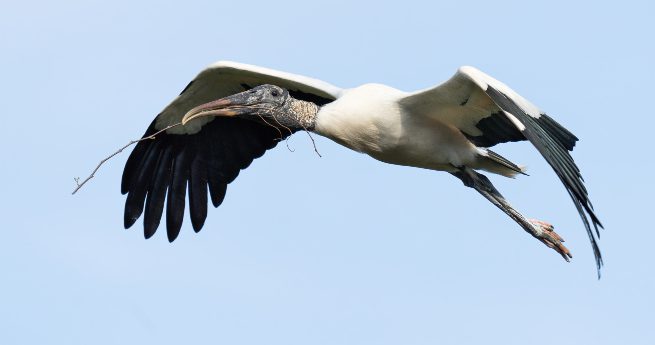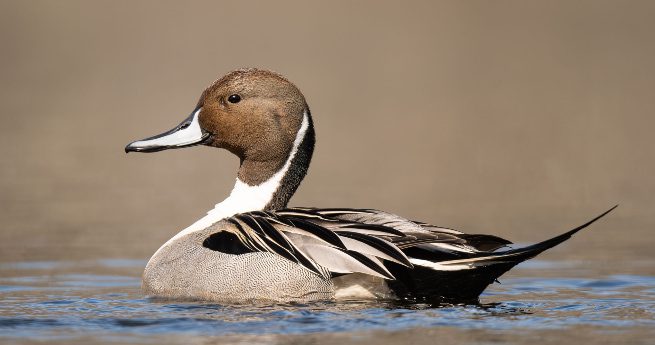Port Lavaca Bird Sanctuary, a highlight of the Calhoun Loop on the Great Texas Coastal Birding Trail, is a must-visit destination for birding enthusiasts on the Texas Gulf Coast.
Exploring the Port Lavaca Birding Sanctuary and the Calhoun Loop
Port Lavaca Bird Sanctuary, a highlight of the Calhoun Loop on the Great Texas Coastal Birding Trail, is a must-visit destination for birding enthusiasts on the Texas Gulf Coast.
This loop, situated around the scenic town of Port Lavaca, offers a variety of habitats that attract diverse bird species throughout the year. Whether you’re a seasoned birder or a curious nature lover, the Calhoun Loop provides an excellent opportunity to explore the rich avian life of the Texas Gulf Coast.
Overview of the Calhoun Loop and Port Lavaca Bird Sanctuary
The Calhoun Loop is part of the Great Texas Coastal Birding Trail, a renowned bird-watching route that stretches along the Texas Gulf Coast. This particular loop covers several sites around Port Lavaca, each offering unique habitats that support over 250 different bird species.
The loop is known for its coastal marshes, wetlands, and estuaries, which make it ideal for birdwatching and kayak fishing — two of the best things to do in Port Lavaca. Birders can enjoy the serene beauty of the Lavaca Bay Bridge and Matagorda Bay as they explore the loop's many birding hotspots. You might even catch a flock of pink flamingos if you're lucky!
The Best Places to Go Birding on the Calhoun Loop

Port Lavaca Bird Sanctuary
The centerpiece of the Calhoun Loop, the Port Lavaca Bird Sanctuary, is located along the shoreline. It provides excellent views of coastal and migratory birds. The sanctuary is particularly known for its populations of herons, egrets, and brown pelicans. The calm waters and surrounding salt marshes create a perfect environment for wading birds and waterfowl.
Lighthouse Beach and Formosa Wetlands Walkway
Lighthouse Beach is another popular birding site just a short distance from the Port Lavaca Bird Sanctuary. The beach is home to the Alcoa Birding Tower, which offers panoramic views of the area. This spot is ideal for spotting shorebirds, gulls, and terns, especially during migration seasons.
Lighthouse Beach Park also features the Formosa Wetlands Walkway, a scenic pathway through the marshes that provides an up-close view of the local wildlife.
Powderhorn Lake
Located a bit further inland, Powderhorn Lake is a brackish lake surrounded by coastal prairies. This area is known for its diverse bird populations, including raptors, shorebirds, songbirds, cranes, and geese. The lake’s proximity to the coast makes it an excellent spot for viewing seabirds and waterfowl. You might also spot species like the Clapper Rail and Reddish Egret here.
Magnolia Beach

Another excellent location on the Calhoun Loop, Magnolia Beach, offers a mix of sandy shores and salt marshes. This site is ideal for observing wading birds, such as Great Blue Herons, Snowy Egrets, and various shorebirds. The salt marsh habitat is particularly attractive to species like the Clapper Rail and Terns. In the winter, expect to find Sandhill Cranes and Snow Geese!
Indianola Fishing Marina
While primarily a fishing spot, Indianola Fishing Marina’s location on the bay makes it an excellent place for birdwatching. It’s common to see pelicans, cormorants, and gulls here, often perched on docks or skimming the water’s surface. The marina offers a unique vantage point for observing Lavaca Bay and its avian inhabitants, and you might also catch a glimpse of speckled trout and other fish species.
Halfmoon Reef Lighthouse
The historic Halfmoon Reef Lighthouse near Port Lavaca is another fascinating spot for birding and an excellent place to learn about the rich history of Port Lavaca.
The lighthouse, situated along the coast, offers views of Matagorda Bay and the surrounding waters, where you can see various seabirds, including wood storks and pelicans. This area is rich in history and natural beauty, making it a must-visit for birders and history enthusiasts.
Bird Species to Discover on the Calhoun Loop

The Calhoun Loop is a birder’s paradise, offering the chance to see various species. Depending on the season, you can encounter both resident birds and migratory visitors, including:
- Great Blue Heron — These large wading birds are frequently spotted along the coastlines and wetlands of the loop. Their striking blue-gray feathers and long legs make them easy to identify.
- Roseate Spoonbill — Known for their vibrant pink color, Roseate Spoonbills are a highlight for many birdwatchers. They are often seen wading through shallow waters, sweeping their spoon-shaped bills to catch small fish and invertebrates.
- Brown Pelican — These coastal birds are commonly seen gliding over the water or diving for fish. Pelicans are a familiar sight around the Port Lavaca Bird Sanctuary and coastal sites on the loop.
- Snowy Egret — With their bright white feathers and yellow feet, Snowy Egrets are a beautiful addition to the wetlands and shorelines of the Calhoun Loop. They are often seen wading through shallow waters in search of food.
- American Avocet — These elegant shorebirds, with striking black-and-white plumage and long, upturned bills, are often spotted in the shallow waters of the loop’s beaches and wetlands.
- Black Skimmer — Known for their unique feeding behavior, Black Skimmers use their elongated lower mandibles to skim the water’s surface for fish. They are commonly seen along the beaches and inlets of the Calhoun Loop.
When Is the Best Time to Go Birding on the Calhoun Loop?

Birdwatching on the Calhoun Loop is rewarding year-round, but certain seasons offer unique opportunities to see specific species.
Spring and Fall
Spring, from March to May, and fall, from September to November, are peak times for birdwatching on the Calhoun Loop. During these seasons, migratory birds pass through the area, stopping to rest and feed before continuing their journeys. This is the best time to see various species, including warblers, vireos, and shorebirds.
Winter
Winter, from December to February, brings an influx of waterfowl and raptors to the Calhoun Loop. Species like Northern Pintails, Red-Breasted Mergansers, and Bald Eagles are more commonly seen during this time. The cooler weather also makes for a comfortable birding experience.
Summer
While summer, from June to August, is typically quieter for birdwatching, the resident species of the Calhoun Loop are still active. This is a great time to observe breeding behavior and see young birds as they fledge. Be sure to visit early in the morning or later in the evening to avoid the heat.
Helpful Tips for Birders On the Calhoun Loop

- Bring Binoculars and a Field Guide — Binoculars are essential for getting a close look at distant birds, and a field guide specific to Texas birds can help you learn more about each species.
- Dress for the Weather — The Texas Gulf Coast can be hot and humid, especially in the summer. Wear lightweight, breathable clothing, and bring plenty of water to stay hydrated.
- Plan Your Visit Around the Tides — Many birds in the Calhoun Loop, particularly shorebirds and waders, are more active during low tide when food is more accessible.
- Use the Birding Towers — The Alcoa Birding Tower at Lighthouse Beach and other viewing platforms around the loop provide excellent vantage points for spotting birds.
- Be Respectful of Wildlife — Keep a safe distance from birds and their nests, and avoid making loud noises that could startle them.
Embark on a Birding Adventure on the Calhoun Loop with Beachside
The Port Lavaca Bird Sanctuary and other destinations on the Calhoun Loop offer diverse habitats and over 250 resident and migratory bird species to discover. If you’re looking for more birdwatching opportunities on the Texas Coast, check out the Tres Palacios Loop in Palacios.
Speaking of Palacios, we would love to give you a tour of our beachfront lots that are ready to purchase on the coast in Palacios, Texas! Our charming coastal community is just a 30-minute drive from Port Lavaca, making it easy to spot birds on the Calhoun Loop and Tres Palacios Loop all year round. Book a tour of our beachside lots to get a taste of what our welcoming community offers.

